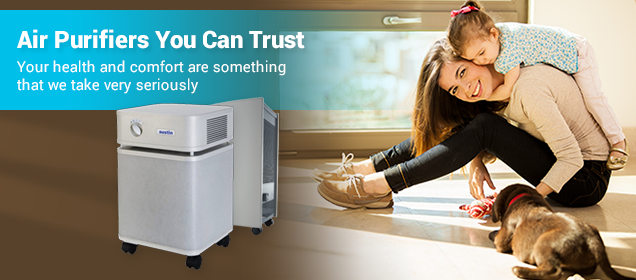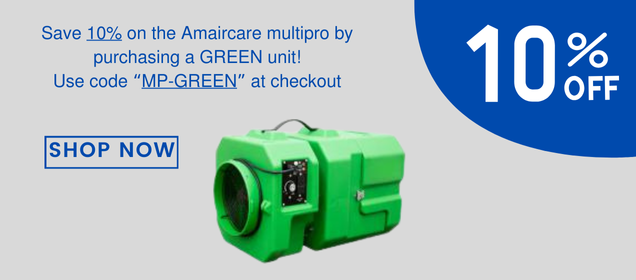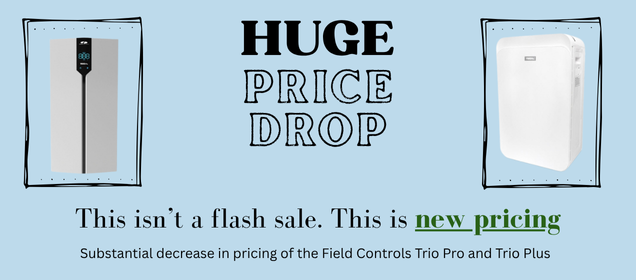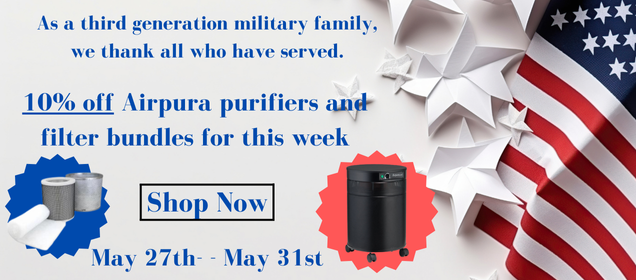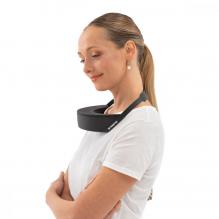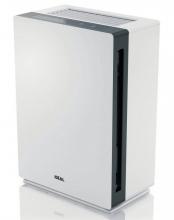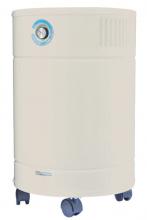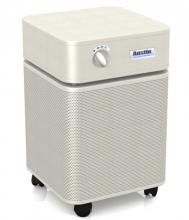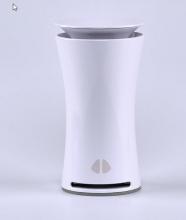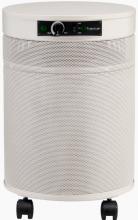Allergies are a problem for millions of Americans. The Asthma and Allergy Foundation of America (AAFA) has found that 1 in 3 of us has some sort of allergy – that’s over 100 million people! As for children, the CDC notes that around 27% of those under 17 have some sort of allergy, with seasonal allergies being the most common (18.9%).
It’s not just one single allergy trigger that’s an issue, either. When you go to the allergy doctor, you get tested for a myriad of different potential allergens.
Let’s take allergies related to animals, for example. The AAFA also gives us numbers on pet allergies - that they affect around 30% of Americans. So if Fido or Flully is making you sneeze, you’re not alone.
Hay Fever and Seasonal Allergies
Seasonal allergies are another common category of allergy that are often related to what’s in bloom. In these cases, of the 81 million Americans who suffer from rhinitis or “hay fever” and others allergic to greenery, being indoors is often a respite. However, if too much of the allergen comes in from outside, you might have a problem.
In addition to the above natural allergies, it’s also important to know about a range of allergies related to various chemicals. And what about food allergies, and allergies to medications? (Here are some of the most common drug allergies listed by Statista.)
We’ll focus on the allergies to airborne particles here. The conversation takes place in the context of a large and varied medical field. In short, allergy is a big business. And some types of allergies are growing. This NIH resource talks about the prevalence of allergies to foods like eggs and peanuts, and why they may be more ubiquitous now than in the past. There’s not a lot of consensus on exactly why we have higher rates of allergies than we used to. Some cite a lack of interaction with organic materials, i.e. dirt, among people of any age group (here’s some more research on this from the NIH). There’s also the suggestion that too many antibiotics at a young age can affect the microbiome and possibly trigger autoimmune changes.
Regardless of why people have allergies, there’s a big question of what to do about them. When you’re sneezing, sniffing, aching, coughing, or wheezing, this is a big deal and something that you need help with!
Using Air Purifiers for Allergy Remediation
Air purifiers are a great way to cleanse the living spaces that we have, to make the air inside of them more breathable. Add up the time that you spend in your home, including sleeping time, meal time and everything else that you do there throughout the day. This is probably the most important environment that you have. If you suffer from allergies in your home, you’re going to be suffering a lot. Just ask anybody with any kind of pet allergy who has an animal that they’re allergic to in their own home. Allergies cause runny noses, itching, sneezing, coughing… they really decrease quality of life and are often very uncomfortable.
You also have to think about the mildness or severity of the allergies in question. It’s different for every person. Some people just experience a minor itchiness or irritation after hours of cohabitating with an animal. Others get hives or more severe reactions the instant they come in contact with the pet dander in the interior space. That might mean extreme discomfort and itching. It might even mean respiratory problems. An expert source, the American College of Allergy, Asthma & Immunology ACAAI, provides a general estimate of 10-20% of Americans suffering from pet allergies, while it’s important to note that “the breakdown of pet allergy severity into categories such as mild, moderate, and severe is primarily based on clinical observations and expert consensus rather than specific epidemiological studies.”
Then there’s a spectrum of allergic reactions in between. Some people are only allergic to certain breeds of dogs or cats. Others have pollen allergies that go along with the seasons.
In any case, air purifiers trap those potential allergens and remove them from the airstream, which is critical for having better quality of life where you live.
The Mechanics of Allergen Filtration
In order to prevent allergic reactions, air purifiers often need to remove small particles down to the size of a few microns in diameter.
For instance, dust mite waste is very small. Dust mite allergies affect 20 million Americans a year. They’re not allergic to the dust mites per se, rather, they have reactions to the carcasses or waste of the dust mite itself.
Because the machine needs to trap these very small particles, it’s important to have a machine with a modern HEPA filter. HEPA filters work down to a very small level and remove a lot of of these particles from the airstream.
Multiple Filtration for Air Purifiers
Here’s another thing to think about when you’re choosing an air purifier for an allergy.
Some of these modern machines have more than one filter built in.
For example, a design that can be very effective for dust mite allergens is a model that has not only a true HEPA filter, but an additional pre-filter that catches the larger particles that dust mite particles may be attached to.
So the original filter catches those larger particles, and then the HEPA filter knocks out the rest.
This “divide and conquer” strategy can be extremely effective.
There’s also the use of activated carbon. The activated carbon filter traps small particles in the holes or pores of the carbon material.
Many would say that carbon is not as important for allergens as the HEPA filter is. Still, that’s a dual filter system that’s on a lot of modern air purifiers, and can help with various contaminants.
Air Change Rates
To be most effective against allergens, you also want to have a machine that addresses the air exchange rate in your given room or space.
That means sizing air purifiers according to the room, and it also means that you will be wanting more air changes per hour in order to scrub out more allergens.
So for instance, if the room that you have is 200 square feet and the air purifier is rated for 400 square feet, It will do a larger number of air changes per hour.
There’s also something called the Clean Air Delivery Rate or CADR that applies here. It’s a standard set by the Association of Home Appliance Manufacturers or AHAM. A high CADR means the machine will work harder to cleanse the air of a given contaminant.
A Range of Contaminants
At the end of the day, air pollution is a fairly broad term.
Allergens are just one type of air pollution that can trigger or worsen health conditions. You also have things like PM 2.5 that comes from a range of sources, including industrial pollution and the burning of wood or coal. You have elements like nitrogen oxide that come from vehicle exhaust.
Then there are all of the consumer chemicals that come in manufactured products, like formaldehyde.
With all of that in mind, getting the right protection is, in some ways, a complex process.
As for allergens, here are some helpful ideas for models that can help you to breathe easier and remove those triggers from your indoor environment.
There’s the Airpura I-700, with a True HEPA. Or take a look at the Amaircare 3000 HEPA, with coverage for up to 1800 square feet, or the IDEAL pro 40 or 80.
Let US Air Purifiers LLC help with any questions about design or engineering with the new technologies that are available today. Get confidence about your indoor air!
